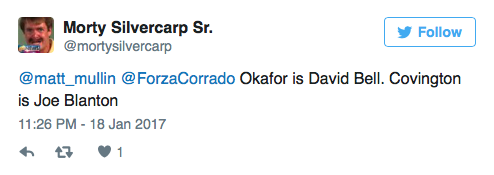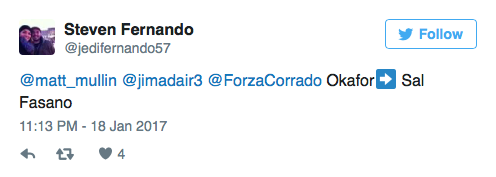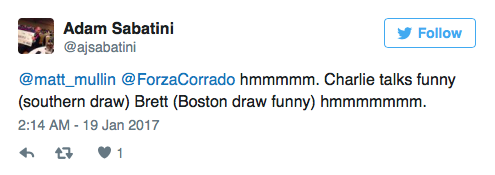
January 21, 2017
Just over 10 years ago, the Phillies had finished their sixth straight season with at least 80 wins, but had yet to make a postseason appearance since Joe Carter crossed home plate to end the 1993 World Series in walk-off fashion.
The 2006 Phillies were a good team. But it would take two more years – and the addition of a few more pieces – for them to be considered a great team. Still, there was reason for hope. Optimism, not just in the short term, but also long term.
In 2008, that optimism was justified in the form of the city's first title in 25 years.
It's been over a decade since that 2006 Phillies team, of which no players remain after the team decided to not exercise Ryan Howard's $25-million option for next season. And throughout those 10 years, there hasn't been another team in this city – and, yes, that includes the 2010 Flyers team that went to the Stanley Cup Final – that's made Philly fans feel quite like they did in the summer of '06.
Until now.
While watching Joel Embiid and Philadelphia 76ers snap their 14-game losing streak against the Toronto Raptors on Wednesday night, I was struck by how much this current squad is reminiscent of that Phillies team that played across Pattison Ave. ten years prior.
And apparently, I wasn't the only one.
That win over the Raptors, the second-best team in the Eastern Conference, was followed by a stunning, come-from-behind win over the Blazers on Friday night, one in which Joel Embiid was forced to remain on the bench down the stretch for precautionary reasons after suffering a knee contusion that sent fans across the region into panic mode.
Somehow, the Sixers found a way to win, something that just a few short months ago would've seemed impossible. Now, they're making a habit of winning close games.
They're learning on the job. They're growing, both as individual players and as a team. And, just like the '06 Phillies, they're beginning to create an atmosphere in South Philly that's skipped past contagion and right to all-out epidemic.
When I went on Twitter after that Raptors game to post something about the similarities – it was right after Michael Barkann referred to Dario Saric's blue-collar mentality on the CSN postgame show – I shouldn't have been surprised to find that someone had already beat me to the '06 Phillies comparison.
@ForzaCorrado holy shit man I was thinking the exact same thing.
— Matt Mullin (@matt_mullin) January 19, 2017
Howard ➡️ Embiid
Utley ➡️ Dario
Rollins ➡️ Nerlens
Hamels ➡️ Simmons
What I didn't expect, however, was for so many fans to not only agreed but for them to also start offering up their own comparisons on how the two teams are so similar.
@Michael_Levin @matt_mullin @ForzaCorrado TJ would absolutely run through a fence and brake his nose
— Ron Mexico (@CsPhilly14) January 19, 2017
@ForzaCorrado @matt_mullin @jimadair3 could also do Okafor ➡️ Geoff "l mean Jeff" Jenkins for 2008
— Steven Fernando (@jedifernando57) January 19, 2017
But when you look specifically at the core of that Phillies team, the guys who were part of their World Series run and their continued success in the years that immediately followed, the comparisons are truly uncanny.
It may have taken a little longer than many hoped to see these guys play in Philly, but once they arrived, boy did they arrive. In his first full season as the Phillies starting first baseman, Howard hit 58 home runs, knocked in 149 runs and was named the MVP of the National League. Embiid, while not likely to be named MVP, is far and away the leading candidate for NBA Rookie of the Year. And the impact he's having on his team when on the court is undeniable.
As for the Rollins comparison, I seem to remember he too made a bold playoff proclamation (albeit a year later in 2007) that seemed laughable, right up until it wasn't anymore.
It's not always pretty, but much like Utley, Saric is a guy who is going to put in the kind of work that gets you called a "blue-collar player." Saric won over the hearts of many Philly fans when he opted to pay hundreds of thousands of dollars to get out of his contract in Europe to join the Sixers. Those are the kind of things that get you a free pass when you have a 1-for-12 night as he did on Friday
Simmons has yet to play a game, but Hamels didn't start right out of the gate in 2006 either. And after struggling early, Hamels went 7-3 with a 2.70 ERA over his final 12 starts of the season. And while Howard/Embiid might be the ones providing all the scoring, it's impossible to get to the next level without the appropriate complimentary pieces.
Next, we come to a couple of players who are extremely talented on one side of the ball, but when it comes to the other, they're clearly lacking. One of these guys one is going to be part of the future (Burrell), while the other (Abreu, traded to the Yankees at the deadline in '06) might not even last the rest of the season.
Perhaps Covington's best Flash Gordon impersonation came when he played the role of closer in Friday's win over the Blazers. But the comparisons don't stop there. Gordon was a serviceable closer, but in order to truly compete, the Phillies needed to upgrade to Brad Lidge. RoCo, a serviceable shooter (with the exception of the early part of this season), is good enough for now. But he's not the shooter who will lead the Sixers to the postseason. Like the Phillies, they'll either need to upgrade or find a second shooter.
Sure, Thome was no longer on the Phillies in 2006, but Brand, who retired earlier this season, is no longer on the Sixers roster either. But the mentor role they played and the impact they had on the Howard and Embiid, respectively, is so similar that it needed to be included.
And as good as the player-to-player comparisons are, the coach/manager and front office comparisons are even better.
The vast majority of players listed above were drafted by general managers who were no longer with the team when they were finally ready to compete. For the Sixers, that guy was Sam Hinkie. For the Phillies, it was Ed Wade. Both were underappreciated in their day, but the more time that passes, the more fans begin to embrace the foundation laid by these guys.
But for all the good they did, there was plenty of room to question "how" they went about their Process of improving the franchise, from Hinkie's tanking and obsession with gathering "assets" to Wade's penchant for signing aging vets to massive contracts that included no-trade clauses. Still, without their foundations, this entire column would never have been written. [Maybe you would've preferred it that way.]
And like Wade, who was fired after the 2005 season, Hinkie was forced out a year before being able to enjoy the success of a team he was largely responsible for building.
After the powers-that-be had seen enough from Hinkie and Wade, they brought in the big guns, proven commodities who they believed possessed the ability take their organizations to the next level. Gillick, as you're well aware, was able to do so in two years after being hired prior to the 2006 season. The jury is still out on Colangelo, but if he's able to just get this team to the playoffs by 2018 or 2019, that's a good start.
But things are turning around. Trending upwards. And for the first time in a while, you can feel it.
Not the kind of oh-my-God-they-may-actually-win-this-thing feeling you got when the Flyers burst out of nowhere to make the 2010 Cup Final. No, this is more of the even-if-they-don't-make-the-playoffs-I'm-not-worried-because-the-future-is-so-bright.
They're both great feelings. One just lasts longer.



